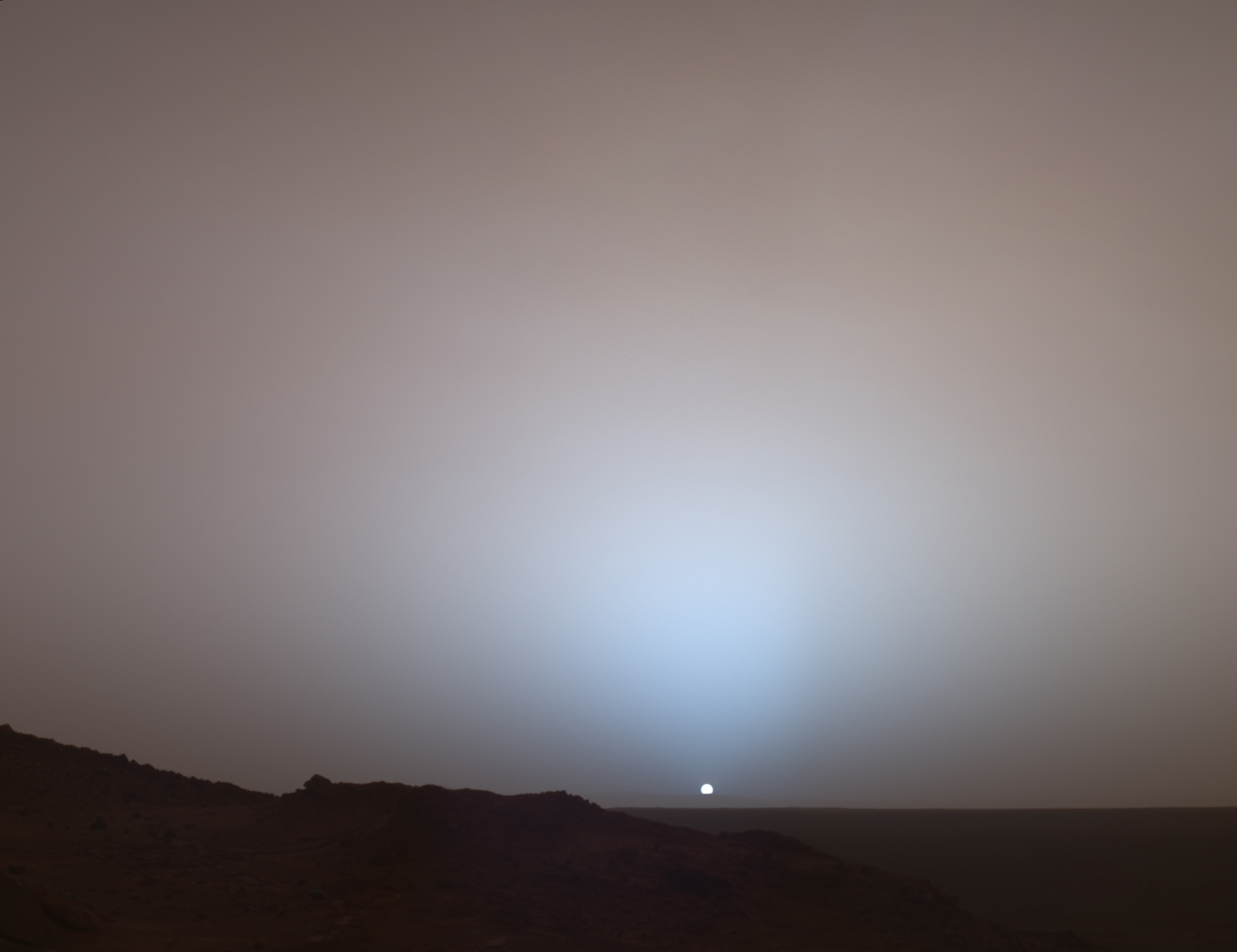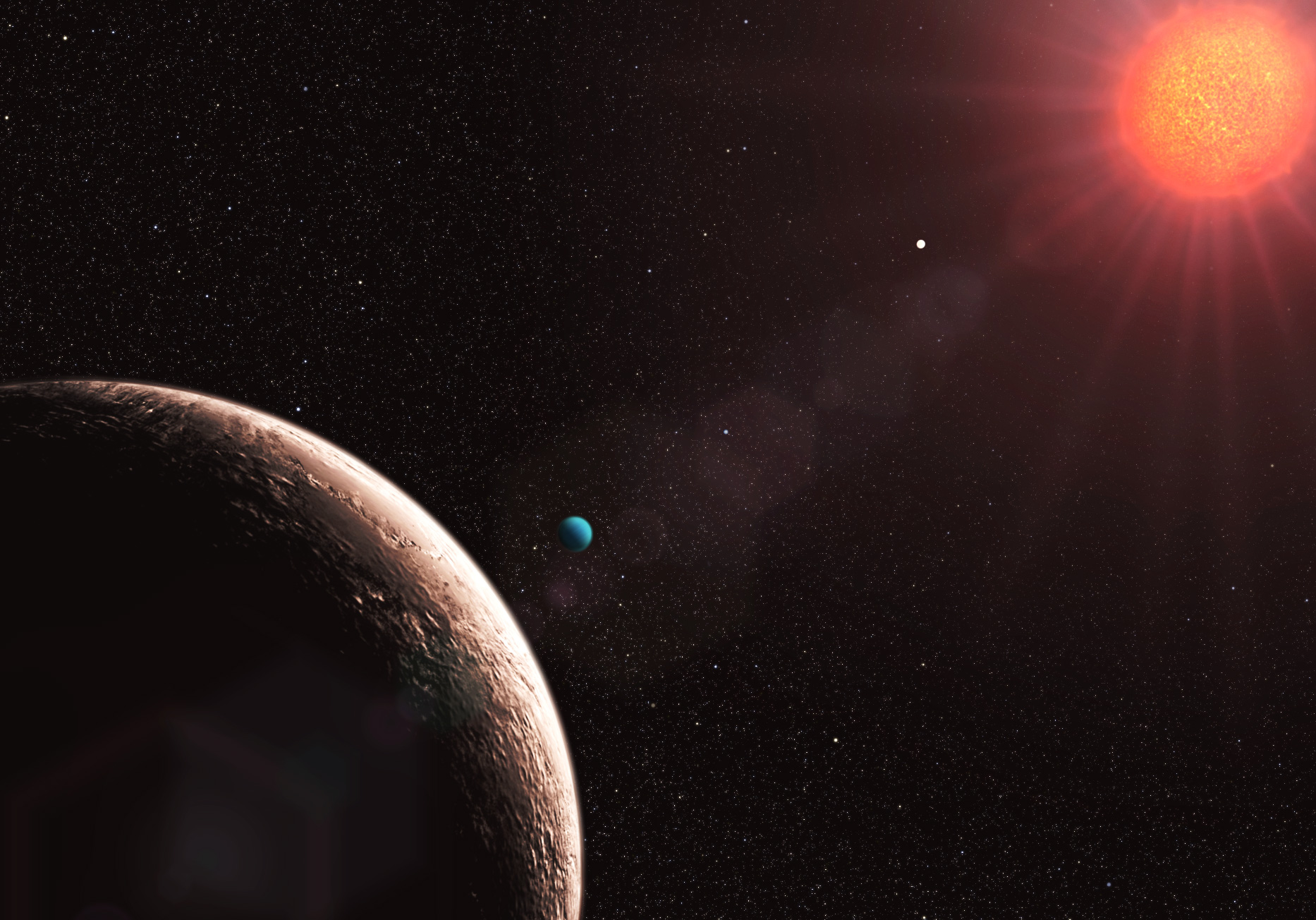Chapter 16 – A Summing Up of the Case So Far
At this stage of my argument, then, a summing up is needed before
I attempt to move on. In order to finish the argument and bring all the threads
together, it is necessary to go backward and more carefully review some of the
assumptions that are implicit in any argument that is based on science.
What are we committing to if we agree with the points argued so
far and especially with what the entire argument assumes and builds on? Three
ideas are essential.

Martian sunset, as
photographed by the NASA probe, Spirit Rover
In the first place, a basic assumption—for many modern thinkers,
an implicit assumption they are not consciously aware of and do not examine—is
that the universe is a single, integrated system. Every one of its parts
connects to all of its other parts: one set of laws, each of which is
consistent with all the others, rules the universe. We don’t understand the full
system of natural laws yet, but in doing science, we implicitly believe that
the laws of science apply on Mars and Gliese 581g just as precisely as those
laws apply here on earth. (Dennis Overbye sums up the debate in a 2007 New York Times article.1)
To some readers this assumption may seem so self-evident that
stating it seems silly. But such a reaction is a hasty, careless one. Accepting
this basic assumption of science—in conjunction with a few of the other
conclusions reached so far in this book—has implications for all that we think
and do.
To be even plainer, let’s consider this idea that our universe is
all one system compared with the idea’s alternatives. In short, let’s ask, “As
opposed to what?”

Artist’s conception of the Gliese 581 system
The alternative view of our universe sees it as being made up of
areas or dimensions or epochs in which different sets of rules apply or once
did apply. This was the view of many of our forebears. They saw the universe as
being run by many varied and mutually hostile gods, each with his or her own
realm. For example, for the ancient Greeks, Poseidon ruled the sea; he could
make storms at will and bring them down on any group of luckless mariners.
Hades ruled the underworld, Zeus, the skies. Hades took Persephone down to his
realm, and even Zeus could only negotiate to get her back for half the year. From
this quarrel came the seasons. Two bellicose brats, who happened to be
supernatural beings, and who could not get along. A universe run by caprice,
lust, cruelty, and revenge.
.jpg)
The Return of Persephone (Frederic Leighton, artist)
The classical Greeks also implicitly accepted that their ancestors
had been much stronger than they were. Repeatedly in The Iliad, heroes hoist rocks that “no man today could lift,” and
they do it with ease.2 In such a universe, certain systems of ideas that
were right in one area or era might be quite different from those that were
right (in both senses of right) in
some other distant land or era.
In the modern view, under science, we assume that the strong
force, the weak force, and the laws of electromagnetism and gravity apply
everywhere and always have done so. It is true that we have not yet found a way
to translate our model of gravity into the system of ideas and equations that
describes the other three, but we are confident that a unified field theory
does exist. Ours is a single coherent universe, we assume.
Do most people in our modern society truly
believe the universe is a single, coherent system? Yes. That is what science is
about. The alternative – superstition – is simply not palatable for most people
in the West today. Whatever the flaws in the current scientific world view—and
it is not logically airtight, as we have seen—we’ve nevertheless seen it
achieve far too many successes to gamble on any of the superstitious
alternatives. People today, by and large, do not turn a sick child over to a
shaman for treatment. Who today would try to fix his vehicle by casting pennies
or lighting incense sticks or chanting? In today’s world, for better or worse,
we in the West especially are citizens of the Age of Science. The evidence says
that is a solid Bayesian choice, therefore, a fully rational one.
Let’s keep this first implicit assumption of science in mind. All
is connected to all else in a coherent, systematic way. (Nicholas Maxwell
discusses this view and its problems at length in his book From Knowledge to Wisdom, pp. 107–109.3)
No comments:
Post a Comment
What are your thoughts now? Comment and I will reply. I promise.